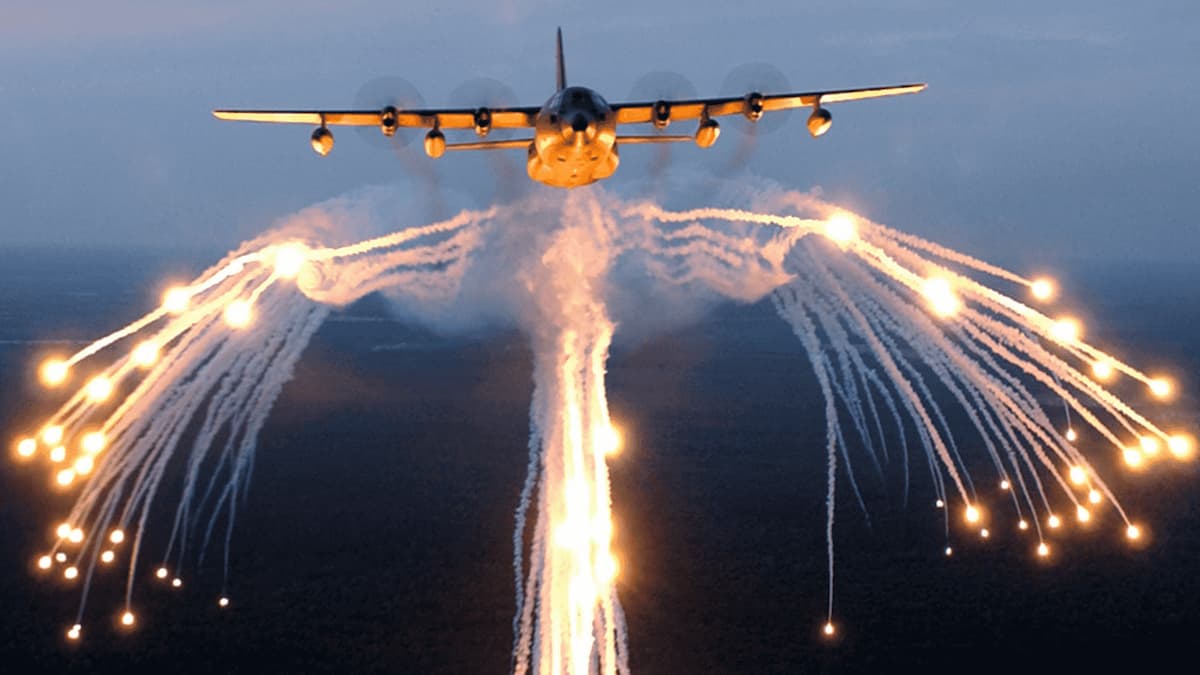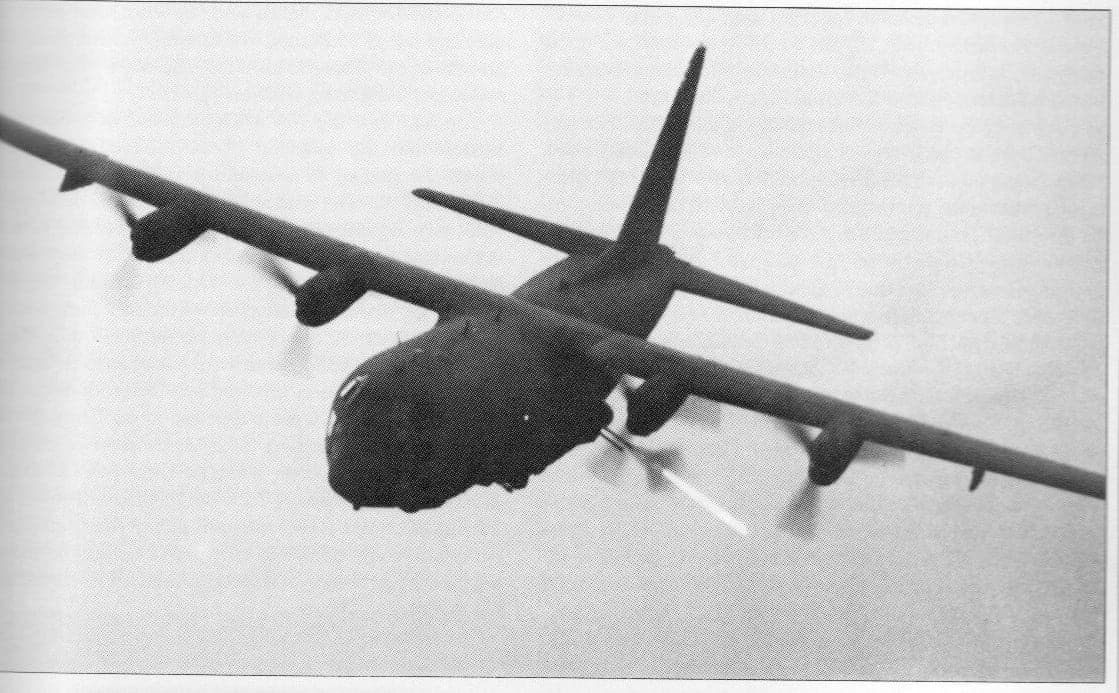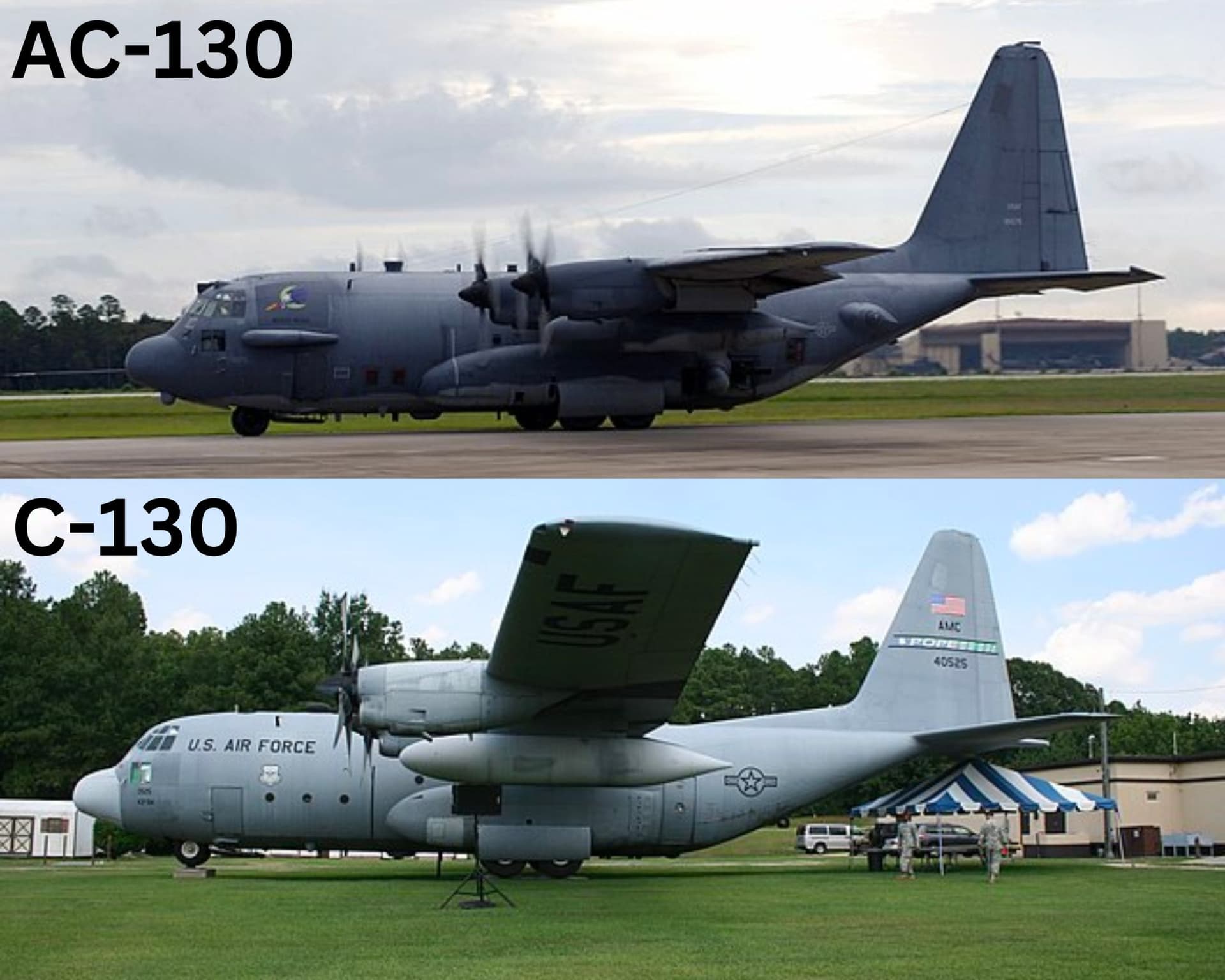
The Lockheed AC-130, a.k.a the “Angel of Death”, is the mother of all gunships. Equipped with the most innovative technology and destructive weapons that military aircraft have to offer, these planes have been critical to United States Air Force and Special Operations missions for over 50 years.
In this article, we’ll take a close look at the AC-130, and undercover how it got its distinguished reputation as the Angel of Death.

The AC-130 is the United States’ lethal, combat-tested aircraft known for supporting Special Operations fighters in high-risk combat missions. The airframe was designed by Lockheed Martin, and Boeing has been responsible for converting the aircraft into its ground-attack configuration.
The upgraded gunship has massive technological enhancements, which increases the effectiveness of the attack platform and its extended service life into future decades. The American military has deployed the AC-130 for decades, providing close-air support, air interdiction, reconnaissance, and force protection. Meant for flying at low altitudes of about 7,000 feet (2,000 meters), the gunship is armed with flares to counter enemy heat-seeking missiles. Due to its sheer size and limited mobility, the AC-130’s operations are most commonly conducted during the night time.
Apart from being the most destructive combat aircraft to ever fly the skies, there are a few reasons why it got the nickname, “Angel of Death”.
The nickname "Angel of Death" is believed to have originated during the Vietnam War, where the AC-130 was used extensively to support ground troops and disrupt enemy movements. The aircraft's unique capabilities allowed it to operate in close proximity to friendly forces while delivering its highly accurate and deadly ground attack weapons on adversaries from above.

Source: USAF
The AC-130 got the nickname “Angel of Death” from registration 54-1630, one of the first AC-130As to be converted from JC-130A aircraft. In the late 1960s, this airframe was used in the Vietnam War, and known as “Death from Above”. Fast forward to the early 1990s, this AC-130 was deployed to Saudi Arabia for Operation Desert Storm. At some point, it was named “Azrael”, which is the angel of death in Islam who severs the soul from the body when one passes away.
On February 26th, 1991, "Azrael" was sent in to support the Coalition ground forces against the Iraqi Army near the “Highway of Death”- a large road between Kuwait and Iraq. Despite heavy fire from anti aircraft guns and missiles from the ground, Azrael severely damaged convoys of tanks, trucks, buses, and cars fleeing the battle. This exact aircraft was pivotal in the closing hours of Operation Storm. When the AC-130As were finally retired in 1995, "Azrael" was sent to live on in the Cold War Gallery at the National Museum of the United States Air Force in Ohio.

The countermeasure system on AC-130 gunships is truly fascinating. When enemy surface-to-air and air-to-air missiles lock onto the Angel of Death, it deploys a series of flares and chaff to misguide rockets off-target. The flare dispensers are located on different parts of the aircraft, including the wings and tail, to provide maximum coverage and protection.

The evasive maneuver leaves behind a trail that resembles the shape of an angel. These flares radiate extreme temperatures much hotter than the aircraft’s exhaust, which draws heat-seeking missiles towards the flares instead of the gunship.
First built in 1968, the Angels of Death family has had multiple upgrades and generations to keep the gunships equipped with the latest technology.

The Angel of Death has been an aircraft figured prominently across the world since its first missions over half a century ago. Here are some of the most notable combat operations for the AC-130:
1968 - 1975 | Vietnam / Laos | Vietnam War
1983 | Grenada | Operation Urgent Fury
1989 | Panama | Operation Just Cause
1991 | Persian Gulf | Operation Desert Storm
1993 | Somalia | Operation Restore Hope
1995 | Bosnia | Operation Deliberate Force
2001 | Afghanistan | Operation Enduring Freedom
2003 | Iraq | Operation Iraqi Freedom
2011 | Libya | Operation Odyssey Dawn
2015 | Syria/ Iraq | Operation Tidal Wave II

Source: USAF
Fast forward to today, and only one variant of the AC-130 is in active service: the AC-130J Ghostrider. The new fifth generation of the Angel of Death, it is the most powerful AC-130 in history. Development and evaluation for the variant were completed in 2015, and the first squadron was activated in 2018. The Air Force originally ordered 37 units, but ended up downsizing the fleet to 31 aircraft. The final model was delivered in November of 2022.
The Ghostrider is the most modern version of the Angel of Death. Here are some specs of the AC-130J:
Over the generations the AC-130 has showcased a wide array of heavily armed weapon systems, usually including a combination of cannons, missiles, howitzers, and Gatling guns. It has a remarkable ability to deliver precision strikes on enemy ground targets, all while simultaneously raining down hundreds of rounds of ammunition in seconds.
The AC-130J Ghostrider is the most innovative, capable, and destructive AC-130 ever. It’s arsenal includes:
1× 30 mm ATK GAU-23/A autocannon
1× 105 mm M102 howitzer
A “Gunslinger” weapons system - AGM-176 Griffin missiles and/or GBU-44/B Viper Strike munitions
Wing-mounted GBU-39 Small-Diameter Bombs (SDB's)
Wing mounted AGM-114 Hellfire missiles
1 x Airborne High Energy Laser (AHEL) (Currently under testing by the Air Force)
The Precision Strike Package also modifies the AC-130J to include a mission management console, communications suite, fire control systems, and two night-vision/ infrared sensors. These systems become even more vital when detecting and engaging targets in low-light and nighttime conditions.

The two aircraft look very similar, but the AC-130s arsenal of side-mounted weaponry make it stand out from a standard C-130.
The AC-130 is a variant of the C-130 Hercules military transport aircraft. The airframe is fitted with weapons targeting systems, sophisticated sensor packages, inertial navigation systems, advanced avionics, and an entire arsenal of weapons to make it the ultimate combat aircraft.
The main difference between the AC-130 and C-130 is their role. The C-130 is primarily used as a cargo and airlift aircraft, transporting troops and equipment into hostile territories. On the other hand, the AC-130 is a fighter plane reserved for supporting ground troops and special operations units with firepower from above.
As a cargo aircraft, the C-130 aircrew usually includes just two pilots and one loadmaster. Depending on the exact model, AC-130s can be operated by 7 to 14 crew members. Along with the 2 pilots flying, the crew on the new AC-130J consists of 1 combat systems officer, 1 weapon system operator, 1 sensor operator, 4 special mission aviators.
In conclusion, the AC-130 gunship has played a crucial role for the US Department of Defense and remains one of the most advanced and formidable aircraft in the world. The Angel of Death has provided vital support to so many ground troops, while delivering devastating firepower to enemy positions. Its ability to engage targets with pinpoint accuracy and deadly force has made it a valuable asset in numerous conflicts, including the Vietnam War, the Gulf War, and the War on Terror.
Even with its impressive array of weapons and advanced targeting systems, the AC-130 won’t be the most advanced gunship forever. Its colossal, slow-moving nature prevents it from competing with the future of warfare technology. Unmanned aerial vehicles and advanced anti-aircraft artillery could someday pose a threat to the effectiveness of the AC-130 some day down the road.
Albeit, it is extremely impressive that the same airframe has survived for over half a century. But for now, its continued development and refinement ensure that it will remain a valuable asset for years to come. Hopefully, it is clear now why the impressive aircraft in this fleet are called Angels of Death.